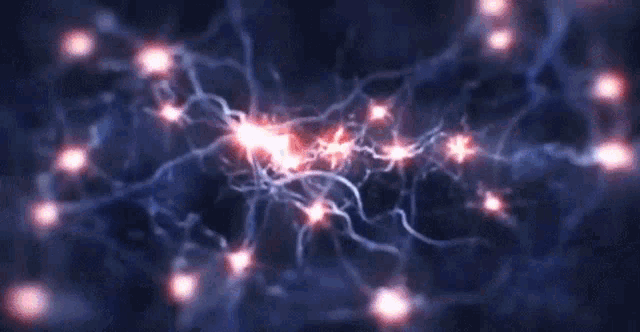
TIPIf you want to translate into another language, please use the translate feature in your browser.

1. Introduction: The Body as a “Living Machine”
Imagine you’re sleeping soundly:
- Your heart keeps beating
- Your lungs draw in and expel air
- Your digestive system breaks down food into energy
All of this happens without a single conscious thought moving muscles or commanding organs.
It’s as if there’s an “other entity” inside the body ensuring survival—that’s the work of the autonomic nervous system.
2. Nervous System: Conscious vs. Unconscious
The human body has two main neural pathways:
-
Somatic Nervous System
• Controls conscious movements (raising a hand, blinking)
• Sends commands from the conscious brain through skeletal muscles -
Autonomic Nervous System (ANS)
• Regulates automatic processes (heartbeat, breathing, digestion)
• Operates without passing through the “filter” of consciousness
The ANS further divides into two branches that oppose each other yet remain balanced:
| Branch | Main Function |
|---|---|
| Sympathetic | “Fight or flight”: ramps up heart rate, dilates bronchi, shunts blood to muscles |
| Parasympathetic | “Rest and digest”: slows heart rate, activates digestion, restores energy |
3. The Primitive Brain: Brainstem and Hypothalamus
The parts of the brain that control the ANS are among our most ancient structures:
-
Medulla oblongata
Regulates heart rate and breathing reflexes. -
Pons
Synchronizes the rhythm of each breath. -
Hypothalamus
Maintains hormonal balance, body temperature, and stress responses.
Because their commands bypass the conscious cortex, these functions run on autopilot.
4. Real-Life Examples: When the Autonomic Nervous System Works
| Body Process | Conscious Situation | Automatic Response |
|---|---|---|
| Heartbeat | Your heart pounds from fear | Sympathetic speeds it up without conscious effort |
| Breathing | You yawn without thinking | Pons and medulla maintain the breathing rhythm |
| Digestion | You eat a heavy meal then rest | Parasympathetic triggers intestinal peristalsis |
| Sweating | You feel hot or nervous | Sympathetic induces sweating to cool you down |
5. Why We Don’t Notice It
Internal organs have almost no pain receptors for their normal activity.
The conscious cortex only “monitors” certain signals (pain, extreme fatigue).
Over time, the brain treats these familiar functions as routine subconscious tasks.
6. When Automation “Errors”
-
Panic Attack
Sympathetic triggers a false heart-attack response (tachycardia, shortness of breath). -
Dysautonomia
Dysregulated blood pressure and heart rate lead to sudden dizziness or fainting. -
Irritable Bowel Syndrome
Stress triggers excessive intestinal contractions.
Understanding these glitches helps us find solutions like biofeedback or structured relaxation.
7. Influencing the Automatic System with Thought
-
Directed Breathing
The 4–7–8 technique helps calm the sympathetic system.
(inhale for 4 seconds, then hold it for 7 seconds, then release it slowly for 8 seconds calmly.) -
Meditation and Mindfulness
Alters stress signals to the hypothalamus and stimulates the parasympathetic branch. -
Biofeedback
Monitoring heart rate and skin temperature to train the body into relaxation.
8. The Dual “Entities” in One Body
Our body is a symphony of two orchestras:
- One led by consciousness, playing the melodies of deliberate action.
- The other works behind the scenes, keeping automatic rhythms alive.
By understanding and respecting the autonomic system’s work, we can manage our physical and mental health more intelligently.
“Consciousness gives us purpose—but automation keeps us alive.”
9. Neural Networks in the Brain: The Hidden Conductor
While the autonomic system operates independently of conscious thought, the brain’s vast neural networks continuously shape and modulate every bodily response.
-
Cortical and Subcortical Integration
The insular cortex and anterior cingulate cortex process internal body signals (interoception) and send them to autonomic centers. -
Central Pattern Generators (CPGs)
Networks in the spinal cord and brainstem generate rhythmic patterns for walking, breathing, and other repetitive tasks without conscious input. -
Neuroplastic Modulation
Experiences and learning reshape synaptic connections, tuning autonomic responses over time—for example, habituation to stress reduces sympathetic overdrive. -
Functional Connectivity
Large-scale brain networks (default mode, salience, executive control) determine when and how autonomic shifts occur, such as switching from rest to alertness during problem-solving.
10. Automatic Responses to Foreign Invaders and Disease
When a foreign object or pathogen enters the body, an immediate, involuntary defense system kicks in—melding neural reflexes with immune reactions.
-
First-Line Defenses
• Physical barriers like skin and mucous membranes
• Chemical barriers such as stomach acid and lysozymes in saliva -
Reflex Actions
• Cough and sneeze reflexes clear airways of irritants
• Vomiting and diarrhea rapidly expel toxins or pathogens -
Innate Immune Response
Component Role Macrophages Patrol tissues, engulf and digest invaders Neutrophils First responders, release enzymes to kill microbes Complement System Tags pathogens for destruction and triggers inflammation -
Inflammation and Fever
• Damaged cells release cytokines, dilating blood vessels and recruiting immune cells
• The hypothalamus raises body temperature to slow pathogen growth -
Adaptive Immunity
• Dendritic cells present antigens to T and B lymphocytes
• Memory cells form, enabling faster responses on subsequent exposures
This multilayered, automatic defense ensures we rarely notice the battles waged inside us, yet keeps us alive and healthy.
Reflective Questions
-
When have you felt your heart race before you consciously realized you were scared?
-
Which relaxation techniques have helped you calm your body?
-
How could you leverage deliberate thought to balance your conscious control and subconscious regulation?
-
How does understanding your brain’s neural networks change your perspective on automatic bodily processes?
-
Have you ever observed a reflex action—like coughing or sneezing—when your body detected something foreign? How did it feel?

